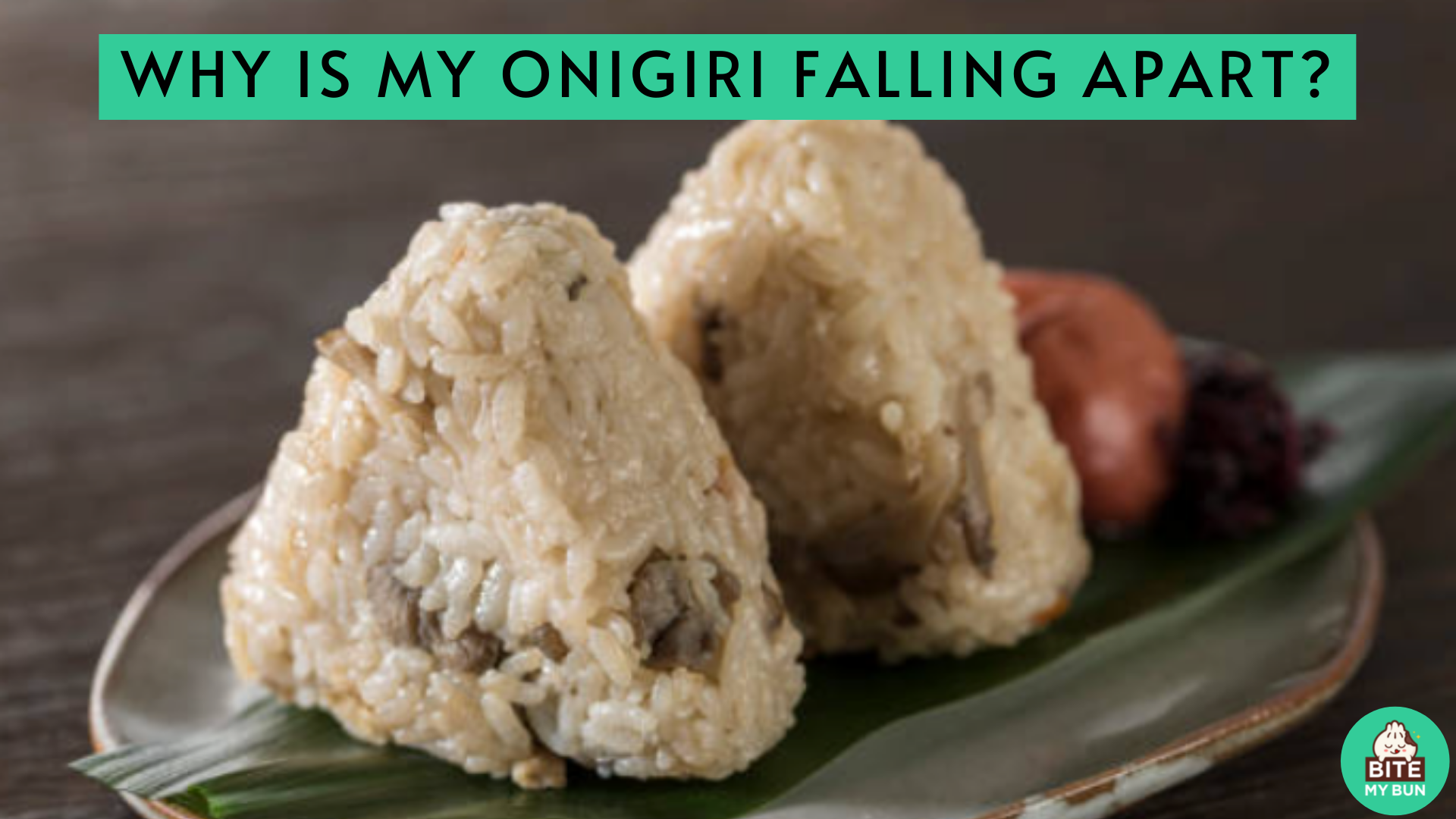Why is my onigiri falling apart? These are the possible reasons
Onigiri is one of the most popular Japanese foods as it combines both flavor and convenience, a reflection of how innovative the Japanese are.
It is very easy to prepare triangle onigiri, however, people often experience one problem: the rice balls falling apart.
The most common reasons for this are that you might have used the wrong variety of rice, or you haven’t cooked it properly.


Check out our new cookbook
Bitemybun's family recipes with complete meal planner and recipe guide.
Try it out for free with Kindle Unlimited:
Read for freeIn this post we'll cover:
Not the right rice
For example, types such as jasmine, basmati, or long grain rice are not suitable for rice balls because they are not sticky enough.
It’s best to use Japanese medium or short-grain rice, like this one from Ubara, cooked just until it’s not too dry and not too soggy.
Look at the fillings
Onigiris are very versatile, so you can be creative in choosing a filling. Consequently, it could also be that you have used a filling that is very oily or runny.
This can make the rice ball too moist since the fluids will seep in between the rice grains, making the ball lose shape and fall apart.
Also read: onigiri vs onigirazu, which is which?
Other possible reasons
If you haven’t done any of the above and yet your rice balls still won’t stick together, here are some more possibilities:
Dry hands
You started molding the rice with dry hands. If you did not dampen your hands beforehand, the grains would only stick to your palms and not with each other.
Salt and water mixture are widely used in this for added seasoning outside the onigiri. Slightly wet your hands in between every rice ball.
Also read: this is how you keep your onigiri overnight for a day old snack
Not enough pressure
During molding, use just enough pressure to press the rice together but not too much to squeeze and crush the grains.
You can also look at getting some handy onigiri rice molds.
Rice not rinsed thoroughly
It would stick a lot more when the rice is rinsed well. Repeat rinsing until the water runs clear.
Cold rice
The rice has gone cold before you can mold it. You should only let the freshly cooked rice cool enough for you to be able to hold it, but still hot to touch.
The cooler the rice is, the lesser it would likely clump together. You can use a plastic wrap or bag when molding so you wouldn’t handle the rice directly.
You can eat onigiri cold though once you’ve made it.
Day-old onigiri
A day-old and cold onigiri would lose its stickiness, particularly if you have put it in the fridge. If you should refrigerate, wrap it in plastic wraps to prevent it from drying out.
Always warm it up before eating it, but it’s best consumed shortly after being made.
Also try this Yaki onigiri recipe, it’s the perfect Japanese grilled rice ball snack for drinks!
Check out our new cookbook
Bitemybun's family recipes with complete meal planner and recipe guide.
Try it out for free with Kindle Unlimited:
Read for freeJoost Nusselder, the founder of Bite My Bun is a content marketer, dad and loves trying out new food with Japanese food at the heart of his passion, and together with his team he's been creating in-depth blog articles since 2016 to help loyal readers with recipes and cooking tips.
